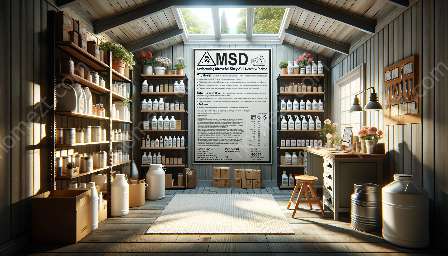Hazardous materials pose significant risks when stored improperly. Whether you need to store hazardous materials indoors or outdoors, it's crucial to follow safe storage practices to ensure the safety of your home and the environment.
Proper storage of hazardous materials is not only critical for home safety and security but also for environmental protection. This guide will provide a comprehensive overview of indoor and outdoor hazardous material storage practices, including important considerations and best practices.
Indoor Hazardous Material Storage
Storing hazardous materials indoors requires careful planning and adherence to safety regulations. Whether in a residential, commercial, or industrial setting, the following practices are essential for safe indoor storage:
- 1. Inventory Management: It is crucial to maintain an updated inventory of all hazardous materials stored indoors. This helps in tracking the quantity, location, and condition of the materials, allowing for better risk management and emergency response.
- 2. Proper Labeling: All hazardous materials must be clearly labeled with their contents, hazards, and any required safety information. This ensures that anyone handling or working with the materials understands the associated risks and necessary precautions.
- 3. Storage Segregation: Different types of hazardous materials should be stored separately to prevent incompatible substances from coming into contact with each other. Segregation helps minimize the risk of chemical reactions and ensures safer storage conditions.
- 4. Containment Measures: Adequate containment, such as secondary spill containment, should be in place to prevent leaks and spills from reaching the surrounding environment. This is particularly important for liquids and other potentially hazardous substances.
- 5. Ventilation and Temperature Control: Indoor storage areas should be well-ventilated and temperature-controlled to prevent the buildup of hazardous fumes and to maintain optimal storage conditions for the materials.
- 6. Emergency Response Equipment: Access to emergency response equipment, such as spill kits, fire extinguishers, and personal protective gear, is essential for addressing any incidents or accidents that may occur during storage or handling.
Outdoor Hazardous Material Storage
When storing hazardous materials outdoors, additional precautions and considerations must be taken to mitigate environmental risks and ensure compliance with safety regulations:
- 1. Proper Containerization: Outdoor storage containers must be designed to withstand environmental conditions and prevent exposure to the elements. Durable and weather-resistant containers are essential for protecting hazardous materials from external factors.
- 2. Security and Access Control: Outdoor storage areas should be secured to prevent unauthorized access and potential tampering with hazardous materials. Restricting access to authorized personnel helps minimize the risk of theft, vandalism, or intentional misuse.
- 3. Environmental Containment: Outdoor storage sites should incorporate containment measures, such as berms or dikes, to prevent spills and leaks from reaching the soil or nearby water sources. This is critical for preventing environmental contamination.
- 4. Regular Inspections: Scheduled inspections of outdoor storage areas are necessary to identify and address any signs of deterioration, damage, or potential hazards. Regular maintenance and upkeep of outdoor storage facilities are essential for ongoing safety and compliance.
- 5. Compliance with Regulations: Adherence to local, state, and federal regulations governing outdoor hazardous material storage is imperative. Understanding and complying with relevant regulations helps ensure the legal and safe storage of hazardous materials.
- 6. Emergency Preparedness: Outdoor storage sites should have emergency response plans in place, along with necessary equipment and resources for addressing environmental incidents or accidents.
By following these indoor and outdoor hazardous material storage practices, individuals and organizations can promote both home safety and environmental protection. Proper storage not only minimizes the risk of accidents and emergencies but also contributes to the responsible management of hazardous materials.



